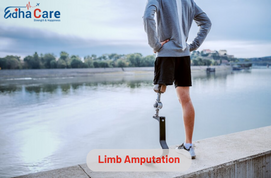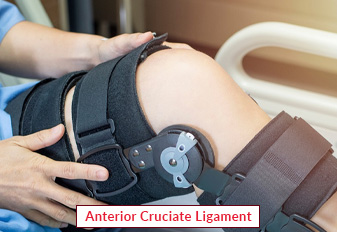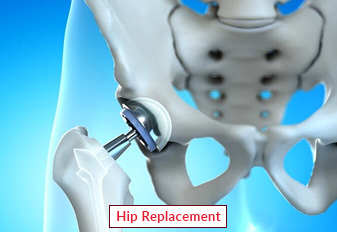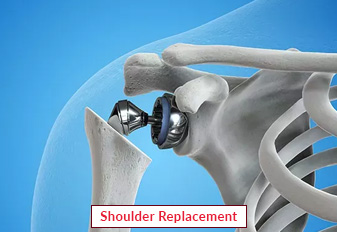Limb Amputation

Limb amputation is a surgical procedure involving the removal of a limb, often necessitated by severe trauma, cancer, infection, or vascular diseases. This intervention is considered when alternative treatments prove ineffective, and the compromised limb threatens overall health. The decision is complex, weighing factors such as the patient's well-being and potential for rehabilitation. Following amputation, rehabilitation and prosthetic devices help individuals adapt, fostering improved mobility and quality of life. Advances in medical technology continually enhance the prospects for those undergoing limb amputation, emphasizing a multidisciplinary approach to restore functionality and promote successful adaptation.
Book an AppointmentAbout Limb Amputation
Limb amputation is a medical intervention undertaken for various reasons, each stemming from specific conditions that compromise the affected limb's functionality or pose significant risks to overall health. Here are five common causes necessitating limb amputation:
- Traumatic Injuries: Severe accidents, crush injuries, or traumatic events can lead to irreparable damage to limbs. When extensive fractures, tissue loss, or vascular compromise occur, amputation may be the only viable option to prevent further complications and facilitate the patient's overall recovery.
- Cancerous Tumors: Malignant tumors affecting bones or soft tissues may require limb amputation to prevent the spread of cancer to other parts of the body. Amputation is often considered when other cancer treatments, such as surgery, chemotherapy, or radiation, are insufficient to control the disease.
- Intractable Infections: Untreated or poorly managed infections, particularly those affecting bones or deep tissues, can lead to widespread damage. In cases where antibiotics and other treatments fail to control the infection, amputation may be necessary to prevent its spread and protect the patient's systemic health.
- Peripheral Vascular Disease: Conditions like peripheral arterial disease can cause insufficient blood supply to limbs, leading to severe tissue damage and non-healing wounds. When circulation cannot be restored, amputation becomes a crucial intervention to prevent complications like gangrene and systemic infections.
- Congenital Abnormalities: Some individuals are born with congenital limb abnormalities that significantly impact functionality and quality of life. In cases where reconstructive or corrective surgeries are not feasible or fail to improve the situation, amputation may be considered to enhance the individual's overall mobility and well-being.
Procedure of Limb Amputation
The treatment procedure for limb amputation involves a comprehensive approach that includes preoperative assessments, the surgical procedure itself, postoperative care, and rehabilitation. Here is an overview of the typical steps in the treatment process:
-
Preoperative Assessment:
- Patient Evaluation: Before amputation, thorough assessments of the patient's overall health, medical history, and the specific condition leading to amputation are conducted. This evaluation helps determine the most suitable level of amputation and assesses the patient's readiness for surgery.
- Psychosocial Assessment: Psychosocial factors, including the patient's mental health, support system, and coping mechanisms, are considered to address emotional well-being and potential challenges during the rehabilitation phase.
-
Surgical Procedure:
- Anesthesia: The patient is administered general or regional anesthesia to ensure they are comfortable and pain-free during the surgery.
- Amputation: The surgeon performs the amputation at the predetermined level, considering factors such as preserving as much healthy tissue as possible while effectively removing the diseased or damaged part.
- Wound Closure: Following amputation, the surgeon closes the wound using surgical techniques that promote optimal healing and minimize the risk of complications.
-
Postoperative Care:
- Pain Management: Adequate pain control is crucial postoperatively. Pain medications and other pain management techniques are employed to enhance the patient's comfort.
- Wound Care: The surgical site requires careful monitoring and care to prevent infection. Dressings are regularly changed, and the wound is inspected for signs of healing or complications.
- Early Mobilization: Physical therapy is initiated early to facilitate mobility, prevent joint stiffness, and promote circulation. This phase aims to enhance the patient's independence and expedite the adaptation to the limb loss.
-
Rehabilitation:
- Prosthetic Evaluation: If suitable, the patient may be evaluated for a prosthetic limb. Prosthetics are custom-designed to restore functionality and support the individual's lifestyle.
- Physical Therapy: Ongoing physical therapy focuses on strength training, gait training, and adapting to the use of prosthetics. The goal is to improve overall mobility, balance, and independence.
- Psychosocial Support: Counseling and support groups play a crucial role in helping patients cope with the emotional and psychological aspects of limb loss, fostering adjustment and resilience.
Require Assistance?
Get A Quick Callback From Our Healthcare Experts
Other Specilities We Cover

Anterior Cruciate Ligament (ACL)

Hip Replacement




